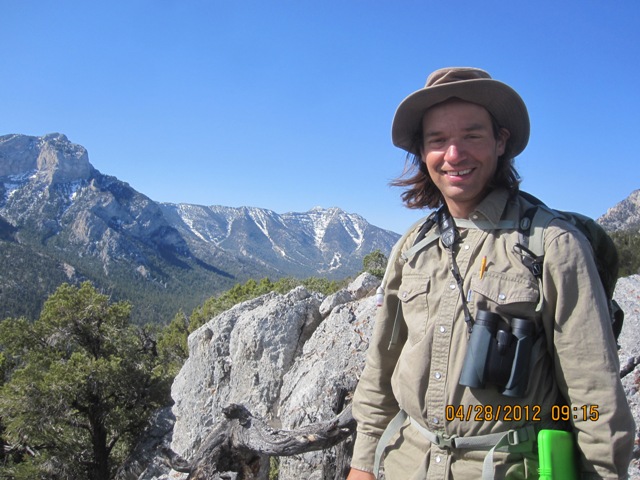-- Jen
Thursday, February 21, 2013
The Nevada Bird Count 2012, in Photos
Ok, I had a few folks ask me about photos of the Nevada Bird Count (NBC), since they'd had a look inside the Lower Colorado River project. So I made a quick look into last year's photo files and came up with some that represent fairly well the gamut of conditions we get to survey, from low elevation Mojave to high-elevation Great Basin. Happy exploring!
Wednesday, February 20, 2013
Watch for Color-Banded Burrowing Owls
 |
| Burrowing Owls at the Port Kells site, showing off their color bands |
-- Jen
Tuesday, February 5, 2013
Feeling a little beaky today . . .
 |
| Vermilion Flycatcher with mildly deformed beak, Muddy River, Clark Co., NV, June 2012 |
The prevalence is mindboggling - they are reporting within their study area an approximate 6.5% of adult Black-capped Chickadees and 17% of adult Northwestern Crows that have some degree of beak deformity. And it's not just Alaska - Britain has been reporting higher rates of beak disorders as well.
What you may not have heard is that USGS is also attempting to track potential spread of these deformities, and is accepting records from across North America. If you find any such individuals, you may report them here. Useful information to include with your sighting includes: location, date, habitat, any other physical or behavioral abnormalitieis - and a photo if you've got one! The British Trust for Ornithology is collecting similar information on their side of the pond, listing some of the types of beak deformities. If you find any birds with these deformities, please report them to USGS - and if you're in/near Nevada, please send that information GBBO's way, as well!
Happy birding!
-- Jen
Subscribe to:
Comments (Atom)



















